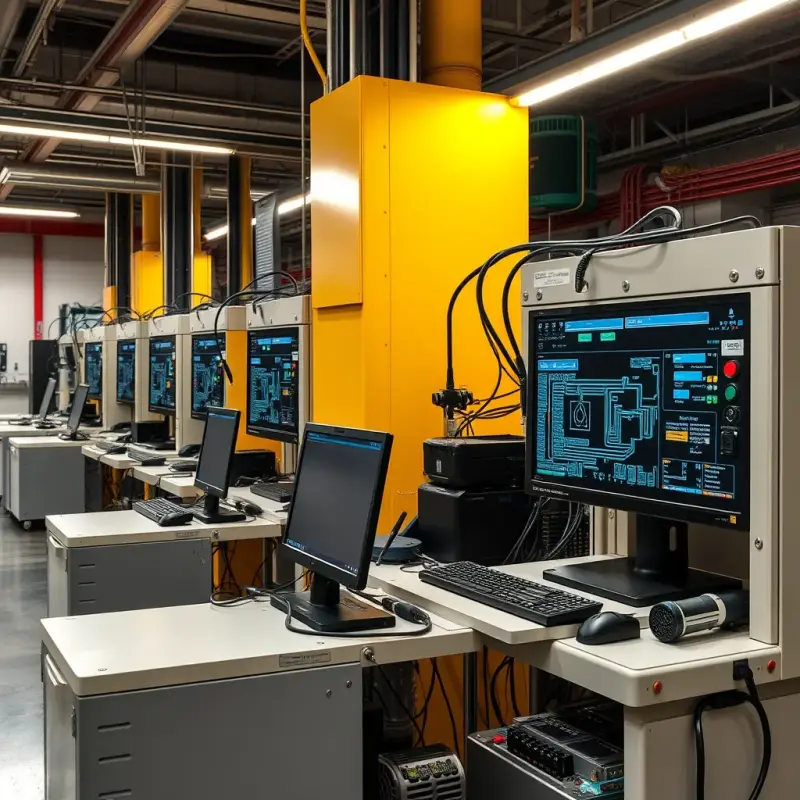Secrets of Configuring Virtual Machines for Software Testing: How to Create the Perfect Environment for Experiments
In the realm of software development, virtual machines (VMs) have become indispensable tools for creating controlled and reproducible testing environments. They enable developers and testers to simulate various operating systems and configurations without the need for dedicated hardware. This article delves into the best practices for setting up VMs to establish ideal conditions for software experimentation.
Understanding Virtual Machines in Software Testing
A virtual machine is a software emulation of a physical computer, running an operating system and applications just like a physical machine. VMs allow multiple operating systems to operate concurrently on a single physical host, each within its isolated environment. This isolation is particularly beneficial for testing, as it enables the replication of diverse user environments and scenarios without affecting the host system.

Advantages of Using VMs for Testing
- Resource Efficiency: Multiple VMs can run on a single physical machine, optimizing hardware utilization.
- Snapshot Functionality: VMs support snapshots, allowing testers to save the state of a machine at a specific point and revert to it as needed, facilitating regression testing and rapid recovery from errors.
- Isolation: Each VM operates independently, ensuring that tests do not interfere with each other or the host system.
- Scalability: VMs can be easily duplicated and configured to simulate various environments, aiding in comprehensive testing across different platforms.
Best Practices for Configuring VMs for Testing
-
Resource Allocation
- CPU and Memory: Allocate sufficient CPU cores and memory to each VM based on the requirements of the software under test. Overcommitting resources can lead to performance degradation. Monitoring resource usage helps in fine-tuning allocations.
- Storage: Use high-speed storage solutions, such as SSDs, to enhance VM performance. Ensure that each VM has adequate disk space to accommodate the operating system, applications, and test data.
-
Network Configuration
- Virtual Networks: Set up virtual networks to simulate real-world network conditions. This includes configuring network latency, bandwidth limitations, and network segmentation to test application behavior under various scenarios.
- Isolation: Isolate test VMs from the production network to prevent unintended interactions and ensure that testing activities do not impact live environments.
-
Snapshot Management
- Creating Snapshots: Before initiating tests, create snapshots of the VM to capture its pristine state. This practice allows for easy rollback in case of failures or when repeating tests.
- Snapshot Maintenance: Regularly review and delete outdated snapshots to conserve storage space and maintain VM performance.
-
Automation
- Scripting: Utilize automation scripts to deploy and configure VMs consistently. Tools like PowerShell or Bash scripts can automate repetitive tasks, reducing the potential for human error.
- Integration with CI/CD Pipelines: Incorporate VM setup and teardown processes into Continuous Integration/Continuous Deployment pipelines to ensure that testing environments are provisioned and decommissioned as needed.
-
Security Considerations
- Access Controls: Implement strict access controls to manage who can create, modify, or delete VMs. This ensures that only authorized personnel can make changes to the testing environment.
- Patch Management: Keep the operating systems and applications within VMs updated with the latest patches to mitigate vulnerabilities.
-
Documentation
- Configuration Records: Maintain detailed documentation of VM configurations, including resource allocations, installed software versions, and network settings. This facilitates troubleshooting and ensures consistency across testing environments.
- Change Logs: Record any changes made to the VM setups to track modifications over time and understand their impact on testing outcomes.
Optimizing VM Performance for Testing
- Resource Monitoring: Regularly monitor CPU, memory, and disk usage to identify and address bottlenecks.
- Load Balancing: Distribute workloads evenly across multiple VMs to prevent overloading a single machine.
- Regular Maintenance: Perform routine maintenance tasks, such as disk defragmentation and clearing temporary files, to sustain optimal performance.
Advanced Virtual Machine Tools and Techniques
Leveraging Advanced Tools
To further optimize virtual machine setups for software testing, consider using advanced virtualization tools. Platforms like VMware Workstation, VirtualBox, and Hyper-V offer features such as linked clones, which allow for the creation of multiple VMs with minimal disk usage by sharing the base system. This technique reduces resource consumption and accelerates the provisioning of testing environments.
Cross-Platform Testing
For applications requiring cross-platform compatibility, consider setting up multiple VMs with different operating systems and versions. Automate the process using tools like Vagrant or Terraform to script environment provisioning. This ensures consistency and saves time when replicating complex setups.
Custom VM Templates
Creating custom VM templates with pre-installed software and configurations tailored to your testing needs can significantly speed up deployment. These templates can be shared across teams, promoting standardization and reducing setup time for new projects.
Integrating these advanced strategies can further refine your virtual testing environments, enhancing their efficiency and adaptability.
Conclusion
Effectively configuring virtual machines is pivotal in establishing reliable and efficient testing environments. By adhering to best practices in resource allocation, network setup, automation, security, and documentation, development teams can create flexible and scalable testing infrastructures. This approach not only enhances the quality of software products but also streamlines the development and testing processes, leading to more robust and dependable applications.
Articles
Subscribe to our notifications to receive the latest and most interesting articles directly in your inbox.